What is the best time period to exercise for diabetes?
Diabetics know that exercise carries a risk of hypoglycemia, but exercise is extremely beneficial for diabetes, when to exercise to reduce the risk of hypoglycemia? Experts suggest that daily exercise for diabetics is best carried out around the time of medication and meals, to grasp the appropriate intensity and duration.
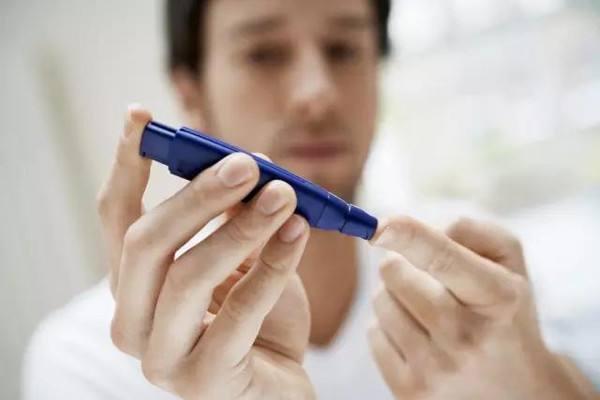
Whether aerobic or anaerobic exercise, as long as diabetics exercise, there will be a sugar-lowering effect, and the risk of hypoglycemia follows. Especially after taking hypoglycemic drugs or injecting insulin, the hypoglycemic effect of both drugs and exercise is superimposed at the same time, which is most likely to trigger hypoglycemia. And eating can raise blood sugar, so diabetic patients daily exercise is best to refer to the time of meals and medication.
Generally speaking, exercising just after insulin injection or within half an hour of taking glucose-lowering drugs will speed up the absorption of glucose-lowering drugs and make it easier for hypoglycemia to occur. And between half an hour and one hour after a meal, diabetics' blood glucose levels begin to rise, and the potency of glucose-lowering drugs diminishes around one hour after a meal.
Therefore, it is recommended that diabetics take/inject hypoglycemic drugs promptly after eating, and start exercising half an hour to one hour later, when the risk of hypoglycemia is smaller. In addition, diabetic patients in the morning before exercise, it is best to measure a random blood glucose, less than 7mmol / L people should eat before exercise.
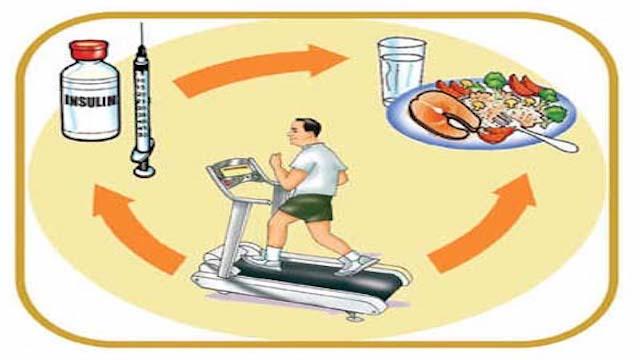
Ways to control blood sugar in diabetes
Diabetes is one of the most prevalent diseases nowadays, and in addition to the high prevalence of middle-aged and elderly people, there is also a trend of gradual rejuvenation. As we all know, the so-called diabetes is a disease in which the body is unable to regulate blood glucose well and exceeds the normal range, and the cause of its development is simply too much energy intake, but at the same time, it is not able to utilize and export energy well. In addition to treating diabetes with medication, it is essential to control the amount, structure and frequency of meals, and it is even more important to exercise regularly so that the body's energy can be consumed and muscle sensitivity to insulin can be improved. When it comes to exercise, many people believe that early exercise is the most favorable to the body, so for diabetic patients what time to exercise is more conducive to blood sugar control? A recent study by a group of scientists has given us the answer, and the study has been published in the biomedical journal Nature Medicine (DOI: 10.1038/nm.4245).

engage in physical exercise
The research began with the study of an epigenetic modification called HDAC3. This HDAC3 is associated with metabolism and the biological clock. Originally, the researchers hoped to knock out HDAC3 in experimental mice to create a new diabetes model, but when the new diabetes model was obtained the researchers were surprised to find that the muscles of the mice did not weaken under exercise conditions as expected, but instead had better exercise endurance. Through in-depth study it was found that HDAC3 knockout mice were indeed inhibited in the utilization of glucose by skeletal muscle, but their consumption of amino acids and fatty acids was increased through the enzyme Ampd3. This means that exercising when HDAC3 is not functioning improves muscle toning, while increased muscle endurance and fullness is better for blood sugar control. As mentioned earlier HDAC3 is associated with the biological clock, and according to research the function of HDAC3 is downregulated in the evening, making it theoretically more conducive to exercise in diabetics. Since mice and humans share the same mechanisms in this regard, the researchers hypothesized that human diabetics would benefit more from evening workouts for muscle toning and blood glucose control.

evening exercise
Seeing this study reminds us of the old Chinese saying "a hundred steps after dinner, can live ninety-nine", according to the study's recommendations, then diabetic patients after dinner walk may be a better way to exercise. In fact, not only has been suffering from diabetes patients, the study's tips for the current state of health is also very meaningful, many young people are busy at work every day during the day, the night also need to because of fatigue is not willing to activities, in the long run, the natural health of the body will be declined, if you can take advantage of the evening exercise may be a better choice.
Regular physical activity is vital to health, and for people with diabetes exercise is also one of the therapeutic measures for diabetes.The position statement issued by the American Diabetes Association (ADA) points out that exercise is beneficial to diabetic patients in terms of better management of blood glucose, improving insulin sensitivity, reducing the risk of cardiovascular disease, facilitating weight loss and improving muscle strength. The China Diabetes Exercise Guidelines also point out that exercise not only prevents diabetes, but also prevents or delays the onset and development of complications, such as diabetic retinopathy and diabetic nephropathy.
However, many diabetics do not know the best time to exercise, often resulting in low blood sugar instead of jeopardizing their health.So, what is the best time for diabetics to exercise?
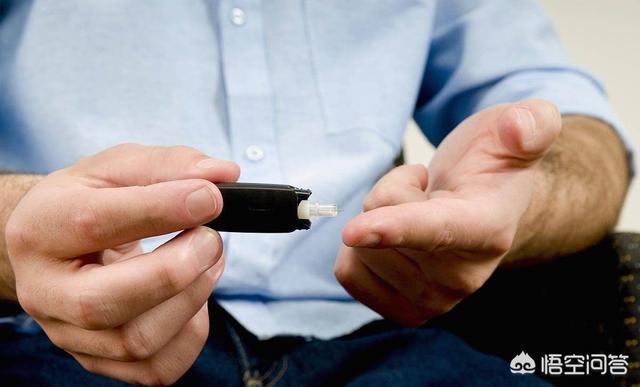
Generally speaking, what time to exercise is mainly based on their own work and rest, but diabetics should consider the timing of their blood sugar peaks and the effects of their medications when scheduling exercise.In principle, exercise should be avoided when blood glucose is low or when the effect of hypoglycemic drugs is strongest, and it is preferable to exercise at times when blood glucose is high.
Usually diabetics' blood sugar starts to rise half an hour after a meal, and peaks one and a half and two hours after the meal. If you exercise soon after a meal, the skeletal muscles need a large blood supply, which will affect the function of the digestive system, but also increase the burden on the heart and lungs. If the time is too long after the meal to exercise, blood glucose has risen, as if the "horse ran and then chase" as passive, not as good as in the blood glucose rise before the exercise, in order to avoid blood glucose rises. Therefore, it is better to exercise before blood sugar rises to avoid it.Exercise is appropriate about an hour after a meal.
But which of the three meals a day is the right one to exercise after?This question is best determined by your own blood sugar.Blood sugar after three meals should be monitored and recorded to identify patterns.If blood sugar is high mainly after breakfast, then time your exercise after breakfast, similarly, if blood sugar is high after dinner you should exercise after dinner. If both are high or you cannot exercise at the appropriate time, then the only way to regulate it is with the help of diet and medication.
In addition, there are some friends who like to exercise early in the morning. Although many people suggest that diabetics should avoid morning exercise, because of the diabetic fasting exercise prone to hypoglycemia, at the same time the air in the morning is not good, and in winter there is the stimulation of the cold air, etc.. But this is not absolute, if you have developed the habit of morning exercise, and feel good, blood sugar control is also good, then it does not have to change. The important thing is to know the prevention of low blood sugar and master the precautions of exercise.It is advisable for diabetics to eat less food before exercising, especially to avoid exercising in the morning after taking medication or after taking insulin without eating.

However.It is important to note that not all people with diabetes are suitable for exercise.Excessive exercise excites the sympathetic nerves and increases the release of glucagon, which allows blood sugar to rise.
Athletically fit people:Stable type 1 diabetics; type 2 diabetics, especially obese; gestational diabetics; abnormal glucose tolerance (IGT) and those at high risk for diabetes (fasting blood glucose >5.6 mmol/L and 2h postprandial blood glucose >7.8 mmol/L). The latter are the best population for diabetes education, and exercise instruction can lead to the reversal of blood glucose in this population without the possibility of developing diabetes.
Patients who should not exercise for the time being:Patients with type 1 and type 2 diabetes with extremely unstable blood glucose, patients with hypertension (systolic blood pressure >180mmHg), patients with severe cardiovascular and cerebrovascular diseases, patients with severe renal insufficiency, patients with severe retinopathy, patients with hemorrhage on the fundus of the eye, patients with fever, severe infections, patients with active pulmonary tuberculosis, patients with acute ketoacidosis or patients with severe peripheral neuropathy. Patients with diabetic foot can perform appropriate upper limb exercises.
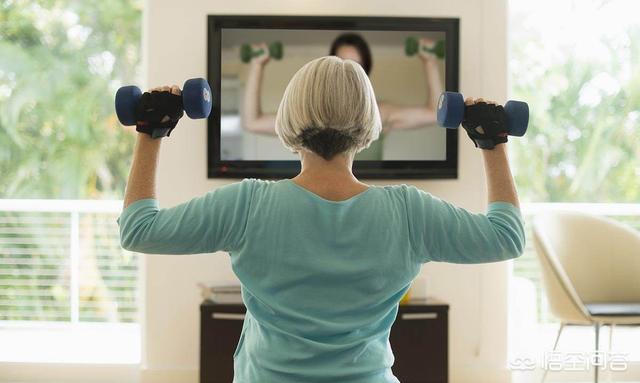
Choice and intensity of exercise modalities for people with diabetes mellitus
For diabetics, different patients should choose different types and intensities of exercise.
Elderly patients with diabetes should choose low-intensity, short-duration exercise, such as walking, brisk walking, qigong, tai chi, etc.; young and middle-aged patients with diabetes can choose moderate-intensity, short-duration exercise, such as brisk walking, jogging, calisthenics, ballroom dancing, etc.; gestational patients with diabetes should choose low-risk aerobic exercise, such as walking, brisk walking, radio gymnastics, calisthenics, etc.; diabetic patients with nephropathy should choose low-intensity, short-time exercise, such as walking, radio gymnastics, qigong, etc.; diabetic patients with cardiovascular and cerebrovascular diseases should choose low-intensity, short-time, low-risk exercise, such as qigong, tai chi, radio gymnastics, etc.; diabetic patients with ophthalmopathy should not avoid strenuous exercise, and can choose relatively small body movement of the activities such as qigong, tai chi, radio gymnastics, etc.; diabetic patients with hemiplegic stroke should be preferred to the healthy limbs of the functional exercise, and then the Patients with diabetic stroke hemiplegia should prefer the functional exercise of healthy limbs, and then the passive exercise of the affected limbs, such as head, neck, upper and lower limbs, wrist and ankle joints, pay attention to the amount of activity should not be too large; patients with diabetic lower limb vasculopathy should choose the appropriate condition and easy to adhere to the exercise, such as walking, walking in place, upper limb exercise, etc..
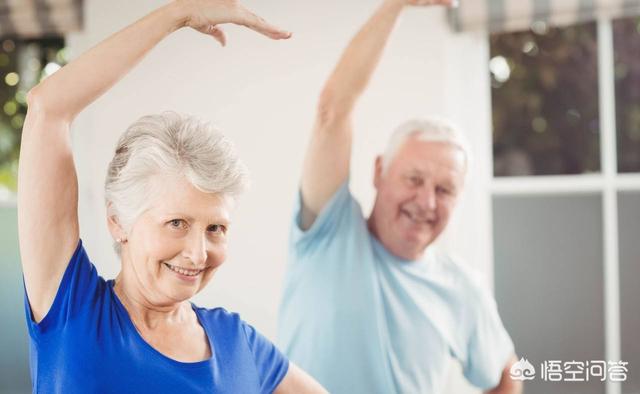
Here are a few ways of healthy exercise that diabetics can choose from depending on their situation.
(1) Ordinary walking method: 60~90 steps per minute, 20~30min each time, suitable for diabetic elderly patients and gestational diabetic patients.
(2) Rapid walking method: 90~120 steps per minute, 20~30min each time, suitable for diabetic middle-aged and elderly patients.
(3) Swinging arm walking method: 90~120 steps per minute, 20~30min each time, both arms swing back and forth when walking, which can increase the activities of shoulder joint, elbow joint, thorax and other parts of the body, which is suitable for middle-aged and old-aged patients with stabilized diabetes mellitus.
(4) Abdominal massage: Easy walking and abdominal massage can help prevent and control indigestion and gastrointestinal diseases, each time 20~30min suitable for elderly diabetic patients.
(5) Twisting body walking method: twisting the body while moving the waist and legs, each time 30~40min suitable for diabetic middle-aged and elderly patients.
(6) Walking on the spot method: walking on the spot within 1 square meter indoors, 100~120 steps per minute, 20~30min each time, this method is suitable for most diabetic patients.

Things to keep in mind when exercising with diabetes
Before exercising, patients should have a thorough cardiorespiratory and diabetic examination and consult with their healthcare provider to determine if they are fit to exercise. If exercise is appropriate, a suitable exercise program should be developed with the healthcare provider. When exercising, choose good quality sportswear, sports shoes and cotton socks. When the weather is good, you can choose to exercise outdoors, but when it is windy, raining, snowing, or when the weather is too cold or too hot, you should choose to exercise indoors. Patients who inject insulin should choose to inject insulin in the abdomen, and should avoid injecting insulin in the thighs or upper limbs and other parts of the body that are more active, so as not to affect the absorption of insulin.
Do warm-up exercises for 5 to 10 min before the start of exercise to prevent joint and muscle strains during exercise. Healthcare professionals should tell patients to carry a blood glucose meter, a diabetes first aid card, and sugary snacks such as sugar cubes and cookies with them so that they can monitor their blood glucose and receive timely treatment when symptoms of hypoglycemia occur. When the weather is hot, it is best to exercise indoors to prevent heat stroke; you should not drink too much water at one time during exercise to prevent symptoms of fatigue, and drinking too much water aggravates the burden on the stomach and the heart; when the weather is cold, it is best to exercise indoors, and you should pay attention to keeping warm when exercising outdoors to prevent catching a cold.

If the patient feels unwell during exercise, such as panic, cold sweat, dizziness or weakness of the limbs, he or she should stop exercising immediately and seek help from others. If the symptoms cannot be relieved, they should go to the hospital as soon as possible. Near the end of the exercise, you need to do 5~10min relaxation exercise to avoid muscle soreness or fatigue and other symptoms. If there is sweating after exercise, you should change clothes immediately to prevent the occurrence of colds, because colds are prone to elevated blood sugar. Half an hour after the end of exercise, you should replenish water in time, it is best to drink plain water or mineral water, if there are symptoms of hypoglycemia can be appropriate to supplement about 125ml of fruit juice (about half a cup of the amount). In addition to exercise after the exercise record should be done, including exercise program, exercise time, sports venues and so on.
If there are any uncomfortable symptoms during exercise and before and after exercise, you should promptly ask your doctor or professional nurse to adjust the exercise prescription accordingly according to the specific situation. Exercise is best started after 1h after meals (from the first meal to start timing), diabetic patients if there is no contraindication to exercise is best to exercise every day after three meals, at least 3 days a week, each exercise adhere to 30~60min, the time should not be too long. Wasting patients each exercise 20 ~ 30min appropriate, obese patients 30 ~ 60min, gestational diabetes patients 20 ~ 30min, patients over 70 years of age exercise 20 ~ 30min can be.
The effect of exercise should be evaluated after exercise. If the amount of exercise is suitable, there should be slight sweating, a feeling of warmth in the body, a feeling of relaxation and a slight sense of fatigue after exercise, but it can be recovered after resting, and the patient feels interested in the exercise, and blood glucose decreases; if the amount of exercise is too much, there will be symptoms of profuse sweating, chest pain, tightness in the chest, generalized fatigue, and muscle pain after exercise, which will be difficult to recover from after a short rest, and the blood glucose will be elevated; if the amount of exercise is insufficient, there will be no sweating, no feeling of heating in the body, no change in pulse rate, and no significant change in blood glucose. no feeling of heat in the body, no change in pulse rate, and no significant change in blood glucose.
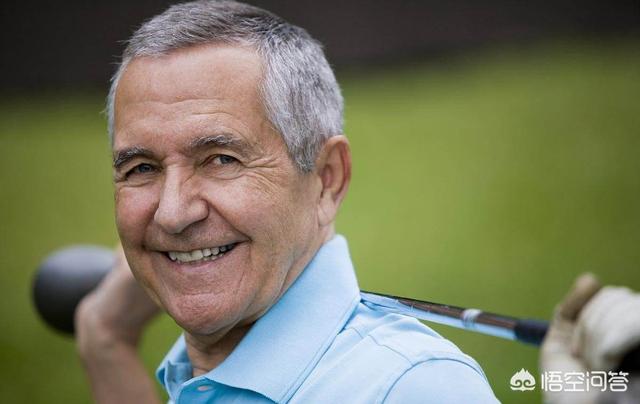
Glucose monitoring during exercise in patients with diabetes
Timely blood glucose monitoring before, during and after exercise is a guarantee that people with diabetes will be able to exercise safely.
If the blood glucose monitoring result before exercise is 5.5~16.7mmol/L, it means that diabetic patients are suitable for exercise. If the blood glucose value is <5.5mmol/L, you should promptly supplement some sugary food, such as 4 cookies, 1 slice of bread or half a cup of fruit juice, etc., and start exercising after the blood glucose has risen to 5.5mmol/L, or else hypoglycemia may occur during exercise. It is also not advisable to exercise immediately if your blood glucose is too high before exercise, as exercise may aggravate the rise in blood glucose.
If symptoms such as dizziness, panic, and profuse sweating occur during exercise, patients should immediately stop exercise and monitor their blood glucose, take sugary foods, and monitor their blood glucose once more after 15min until their blood glucose returns to normal. If symptoms of hypoglycemia are not relieved after taking sugary foods, the patient should go to the hospital immediately.
Blood glucose monitoring after exercise is also very important. If a person with diabetes increases the amount of exercise or engages in strenuous exercise, the risk of late-onset hypoglycemia after exercise must not be ignored. Especially in type 1 diabetes, it is important to monitor blood glucose at bedtime that night to prevent late-onset hypoglycemia after exercise at night.

Finally, because each diabetic has his or her own medical characteristics, the exercise program should also be individualized and not one-size-fits-all. However, it is important to note that the exercise program must be guided and supervised by doctors and professionals.
Xiaoxin reminds you: Do not underestimate the chronic disease, the disease is from small drag big, from light drag serious! Always take your medication as prescribed by your doctor, check your body at the right time, and keep a record to adjust your medication. It is highly recommended to use "AiHui" Health Manager - a robot that can automatically dispense medication, solving the problems of medication, medical checkup, health guidance and parent-patient interaction!
Hello, I'm happy to answer this question for you, I'm Ru Zhaolong, a Saipu Fitness Instructor.

There is no specific research literature on when to exercise in diabetes to show in which period of time exercise is best, so for the exercise time or follow the doctor's advice as well, there will be a lot of recommendations for diabetes exercise online, most of which are based on fitness-based subjective projection, with reference value.
Diabetes is recommended to go to exercise 1 to 2 hours after meals, this period of time after the digestion and absorption of food blood sugar value will increase, if you start to exercise at this time, with the movement of energy consumption, sugar catabolism enhancement, can be appropriate to regulate the blood glucose value in the blood.

As in the case of the three meals at which time of the day to go to training? In fact, this can be based on their own situation to deploy their own, because type II diabetic patients will be accompanied by fatigue every day, then you can according to their own daily hours of the mental state of the training options, because the exercise process we hope that the nerves can be more focused to participate in the control of our movement of the limbs during the exercise.

Recommended exercises include walking, running, cycling, swimming, dancing and other full-body exercises, and the intensity of exercise is generally low or medium. There is a very simple way to recognize the intensity of exercise: if you can sing during exercise, it can be considered low intensity; if you can speak normally during exercise, it can be considered medium-low intensity; if you can no longer speak a complete paragraph smoothly during exercise, it can be considered medium intensity; and if you can no longer speak during exercise, it can be considered high intensity; this method of identification is not so precise, but it can be used as a simple reference.
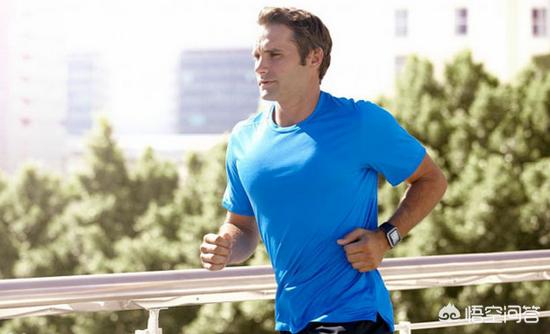
Of course, these people do not lack some of the requirements of the body hope to do some resistance training to shape their own body shape, which in fact can be, but it is recommended to choose a lighter load to do bias endurance training, because the load is too large for the collection of nerves and cardiorespiratory ability to have a greater demand, blind movement will occur in the course of the training of injuries, so for this movement is still recommended to look for a professional responsible for the points of the fitness Coach to assist to complete.

If there is still do not understand the problem, you can follow us, and then the background of the private message Oh ~!
It took three years to accumulate the dry goods, 25.6G fitness dry goods information packet free ~ follow and private message reply "information packet", get 25.6G fitness information packet for free!
If you work hard enough, this packet will definitely help you to become an "expert"! Come and get your packet!
In recent years, the occurrence of diabetes in the clinic is becoming more and more common, as far as the current level of medical technology is concerned, we have not been able to cure this chronic disease. Patients to ensure the health of the organism, you should do a good job of daily conditioning. Exercise can also to a certain extent assist the patient's body blood sugar control, improve the patient's condition. So what is the best time period for diabetic patients to exercise?
Generally speaking, sports exercise within 1 to 2 hours after meals can often play a good role in lowering sugar. If the patient chooses to exercise before meals, this may cause fluctuations in blood glucose, and ultimately the blood glucose is too low or too high. It is worth noting that diabetic patients should try to avoid exercising at the peak of the drug's effect, so give priority to breakfast or after dinner.
Need to be vigilant is that the patient is best to avoid exercise in the morning this time period, due to the lower temperature in the morning, and diabetic patients once encountered when the cold air, it will stimulate its blood vessels, and thus increase the incidence of cardiovascular disease disease, it is recommended that the winter choice in the morning after 10:00 am.
For the vast majority of patients, the duration of each continuous exercise should not be less than 20 minutes, but preferably not more than 40 minutes, in order to better assist in the control of the body's blood glucose, to ensure the health of the body.
However, you don't need to restrict it too tightly, as long as you don't exercise when you're hungry and don't overdo it, it's basically not a big deal.
Instructor: Ren Zhengxin, Attending Physician, Department of Family Medicine, Zhangye People's Hospital Affiliated to Hexi College.
Specialties: 21 years of clinical work in general medicine, the scope of treatment includes diabetes, coronary heart disease, common diseases of women and children, as well as comprehensive analysis and management of daily physical examination.
If you find this article useful, please feel free to like or recommend it to your friends and follow [Medlink Media].
Exercise for diabetic patients should be based on the actual situation of the patient, and coordinated with diet, medication and other treatments. Two main points should be noted:
1. Morning exercise on an empty stomach is not advisable; exercise after meals is usually preferred.
Early morning exercise mostly fasting or out of the semi-starvation state, exercise slightly larger may induce hypoglycemia occurs. Instantly feel dizziness, blurred vision, sweating, fatigue; serious hypoglycemic coma can occur. In addition, there is also a part of the patient early morning exercise due to increased secretion of stress hormones, but after exercise blood glucose rises, so that blood glucose fluctuations, difficult to control.
2. When exercising after a meal, care should be taken to avoid the peak of the drug's effect to avoid hypoglycemia.
Because, in insulin-treated diabetic patients, especially type 1 diabetic patients with high blood glucose levels (>13.9 mmol/L) after the start of exercise causes sympathetic over-excitement, increased levels of glucose counter-regulating hormones, coupled with the inhibition of insulin secretion caused by exercise leads to a sharp rise in blood glucose, free fatty acids and ketone bodies production increased, the metabolism of the adverse effects. In the presence of relatively excessive insulin, exercise increases muscle uptake and utilization of glucose, decreases hepatic glycogen synthesis, lowers blood glucose, and even induces a hypoglycemic response.

How long do you usually have to exercise?
Physiological studies have shown that diabetic patients exercise the beginning of 5 to 10 minutes, can not achieve the purpose of lowering blood sugar; exercise time of 20 to 30 minutes, the role of lowering blood sugar is best; exercise time of more than 40 minutes, although the blood glucose can be lowered, but the increase in fatty acids in the blood, for some patients may also exacerbate the condition of diabetes.
It is therefore recommended thatIt's best for diabetics to keep exercising for about 30 minutes a day, but the overall principle is still to choose the length of exercise that is comfortable for you, based on your individual fitness level.
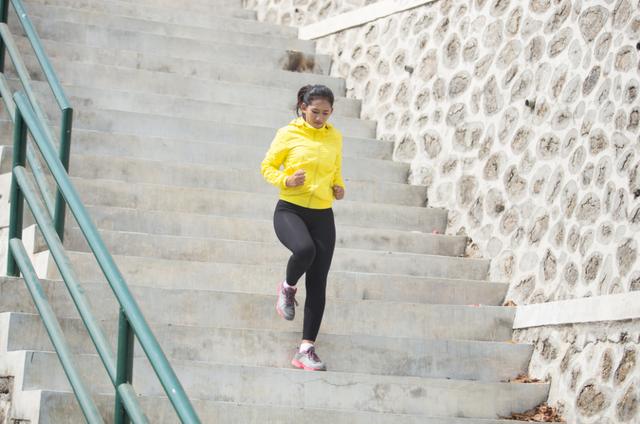
What are the best exercises?
Light intensity exercise
● Walks, standing car rides, and simple household chores last about 30 minutes;
● Walking, bathing, going down stairs, doing radio gymnastics, riding a bicycle on a flat surface, etc. for about 20 minutes;
Exercise at moderate intensity
● Jogging, going up stairs, biking on hills, skating, playing volleyball, hiking, etc. for about 10 minutes.
Depending on the intensity and duration of the exercise above, this corresponds to a calorie burn of 80 kcal.

Tip:
★After exercising, you are a little bit out of breath, have a slight sweat, and can still speak without getting tired, which also means that the intensity of this exercise is appropriate;
★People with heart disease should be treated according to individual tolerance, with no discomfort;
★ Stop exercising immediately if you feel unwell, especially if your blood pressure or heart rate is unstable;
★ Proper warm-up before exercise, so that the body has a period of adaptation, to maintain a gradual and long-term adherence to regular and appropriate exercise.
The best time period to exercise with diabetes
Most of the time periods for diabetic patients to exercise are divided into 2. Generally in the morning from 6:00 to 7:00, this time can make the whole body's nerve excitement, so as to maintain a relaxed mood, conducive to the day's work and study; the other time period is 7:00 to 8:00 in the evening, this period of time to exercise can make the day's nutrients are well absorbed by the body, in the evening when you go to bed, do not cause obesity, you to the cause of obesity.
For diabetic patients generally believe that it is appropriate to exercise 3 to 5 times a week, a day morning and evening each for the best, exercise is best not to intermittent, if less than 2 times a week, the effect is not very obvious, if the physical condition is good, each exercise is not a lot of exercise, exercise does not feel fatigue, you can adhere to the daily exercise.
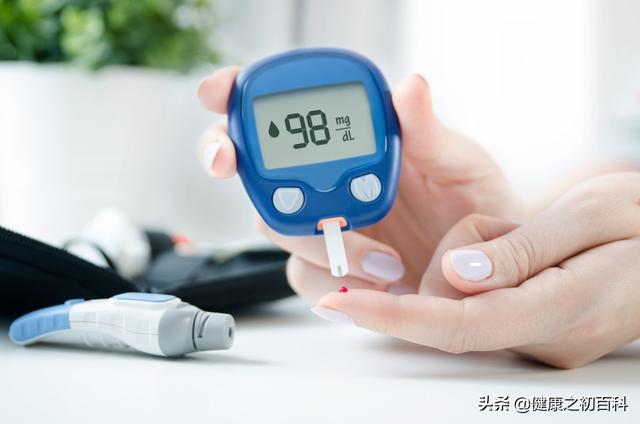
The best way to exercise
1. Walking
Walking is more casual, relaxing and easy to do. Walking for a long time not only enhances cardiopulmonary function, but also accelerates energy consumption, promotes the use of excess fat and normalizes sugar metabolism in the body, which is an effective measure for controlling blood glucose levels. Walking speed is 50~80 m/min, walking at least 30 minutes a day, the trip is not less than 3 km, which can be interspersed with rest or medical health exercises.
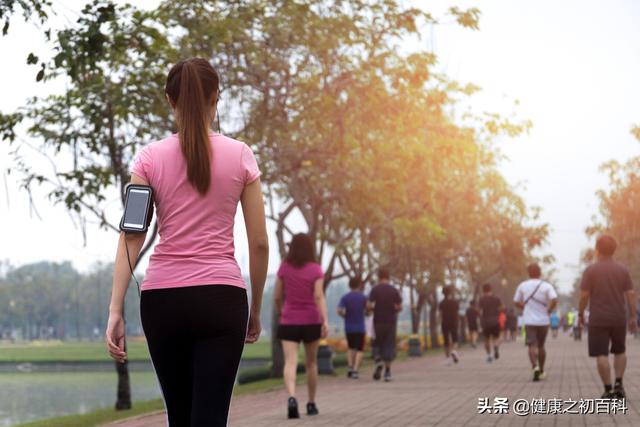
2、proud trot
Jogging is safe and fast, the intensity of the exercise is greater than walking, belonging to the medium intensity exercise. Jogging requirements: correct posture, hands slightly clenched into fists, upper arms and forearms bent to 90 degrees, arms naturally swing back and forth, upper body slightly forward, the whole body muscle relaxation, two feet to land to light, with the forefoot first landing; grasp the good breathing and pace frequency relationship, 2:2 or 3:3 respiratory rhythm, and more with the nose and half-open-mouth respiration at the same time.
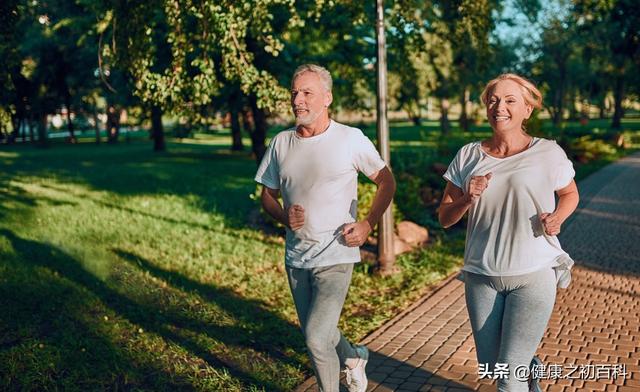
3. Power Bicycle
Improve cardiorespiratory function, exercise lower limb muscle coordination and enhance the whole body endurance, the first practitioner pedal 60~70 times/min, and then increased to medium intensity, pedal 90 times/min, (field training should pay special attention to safety, cycling time can not be too long).
4. Swimming
Enhance lung capacity, accelerate blood circulation, promote metabolism, is a more suitable exercise for diabetic patients. Because of the pressure resistance when swimming, not only to the heart, myocardium good exercise, but also to the central nervous system, cardiovascular system, endocrine system function of the normal play a very good role.
Good life from the beginning of health, the beginning of health, health science professional media!

For people with high blood sugar, dietary interventions, medication, and another important one is exercise. Exercise is a very important part of blood sugar control. So when is the best time period for diabetics to exercise? Take a look.
When you have diabetes, you have to be a "hard worker" from now on. Move more and sit less like a little monkey. Especially after meals.
There are many reasons to get diabetes, but many people with diabetes will have a common problem is that before they are lazy, belong to a sedentary family. But once you have diabetes, you have to live a completely different life than before, and you have to be particularly active.
After eating three meals the blood sugar starts to climb high, at this time try not to sit or lie down on the sofa as soon as possible. Sugar lovers can choose to simply clean up the housework or stand for a while, can not do strenuous exercise immediately after the meal. Almost an hour or so after the meal, go out to exercise. The time of exercise is controlled in about half an hour.
In addition, when you are able to walk, absolutely not driving, use all the available fragments of time to let yourself move more is good for sugar lovers sugar control. So sugar lovers can also according to their own physical condition to arrange specific suitable for their own time to exercise, the premise is to move more.
A few more suggestions for sugar lovers to exercise:
1, it is not recommended to exercise on an empty stomach, prone to hypoglycemia, serious will take life, if that is the habit of morning exercise sugar lovers pocket to install a piece of sugar;
2. Don't go for exercise when you are hungry;
3, sugar lovers should arrange some strength exercises for themselves in moderation, more than just doing aerobic exercise. Because when the body's muscle content increases, the body's inexhaustible sugar can be converted into muscle glycogen to store, which is helpful for controlling blood sugar.
To summarize is that sugar lovers should move more, specifically you can follow the text recommended about an hour after meals to exercise. Don't harbor there not moving after three meals. In fact, you can also arrange the exercise time according to your own specific situation, because what suits you is the best. But remember that must be a combination of aerobic and strength, but sugar lovers should also pay attention to not over-exertion, each exercise do not let themselves too tired, but also to avoid the damage caused by the exercise.
Diabetes, it must be said that has become a major threat to the health of the modern population, whether it is young people or middle-aged and elderly people, are vulnerable to the attack of this disease. In fact, in addition to "eat", there is such a thing, do not do the right thing is easy to increase the risk of disease, it is "lazy".
Work a day, go home always do not want to move; eating and drinking, always have no time to exercise every week. A variety of reasons flooded in the jianghu, in fact, do not exercise, inactive people are very easy to "lazy" out of diabetes.
Causes of diabetes:
The development of diabetes in modern times is linked to three reasons in particular:Genetic, environmental, and behavioral factors。
Behavioral factors" are the most important factors in acquired life and are very much related to lifestyle, lack of exercise being one of the most important ones.
If you don't exercise for 6 months, your weight, waistline, body fat, and blood lipids will increase to different degrees, and your insulin sensitivity and body health index will be on a downward trend, which will lead to an increase in the prevalence of diabetes, especially type 2 diabetes.
In fact, type 2 diabetes has long been recognized as a disease highly associated with physical inactivity, with more than 80% of patients linked to obesity and too little exercise.
Who must do more exercise?
First.For all people should exercise and make sure to do it as often and for as long as possible.
Secondly.It is even more important to increase and stick to exercise for those who are more likely to develop type 2 diabetes, such as obese people, people with three highs, and those who have problems with their own diets.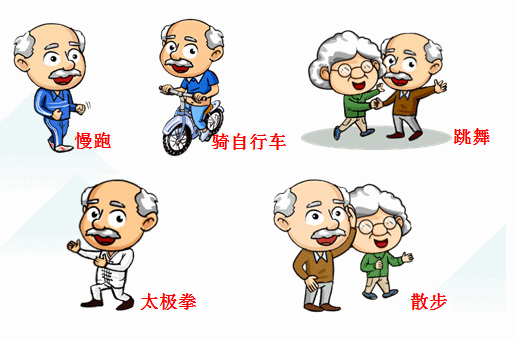
Regular daily exercise can reduce the risk of developing diabetes by 15-60%.
Therefore, exercise is essential for everyone.
What is a more reliable time to exercise?
In terms of exercise, different people need to have different exercise times.
For people with coronary heart disease and myocardial ischemia, morning exercise can lead to myocardial infarction and even sudden death; in addition, morning exercise on an empty stomach may also induce hypoglycemia.
Therefore, for those who want to control blood glucose, it is recommended to exercise 1 hour after dinner, this time period exercise postprandial blood glucose reduction effect is better.
How many times a week is it more reliable to exercise?
Exercise, once or twice does not have much significance, the most important thing is to "adhere to"; three days to fish, two days to sunshine nets of the exercise does not have much effect.
When it comes to specific exercise times, it is recommended to have about five days a week of moderate-intensity aerobic exercise, at least 30 minutes a day, and three days a week of high-intensity aerobic exercise.
Also, it is important to do resistance exercise at least two days a week, preferably once a day. If this is not possible, then it should be done at intervals of one or two days, not more than three days at the most.
There is one more thing to suggest: for exercise, gradual, must adhere to, exercise before a good warm-up, warm-up exercise 5-10 minutes or so, after the activity should also do about 5 minutes of exercise.
Diabetes, a chronic disease with a very high prevalence, in addition to diet, exercise is crucial, so next, whether you are preventing or being treated, please exercise sensibly, master the exercise time, choose the exercise method reasonably, I wish you well.

Note: Pictures from the Internet, if any infringement please inform the removal of
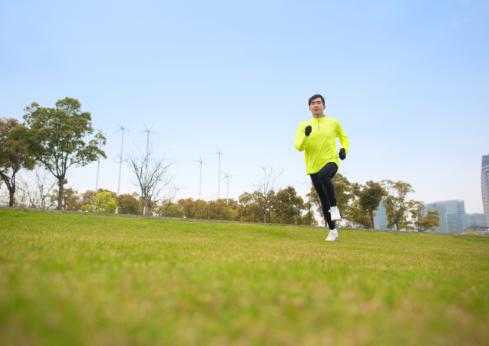
Diabetes belongs to the most common diseases nowadays. Due to the improvement of living conditions, people's diets are constantly moving towards the trend of high fat, high calorie and high sugar content, therefore, apart from genetic factors, diabetes is mostly caused by obesity. Generally speaking, diabetes mellitus will have symptoms such as excessive drinking, excessive eating, excessive urination, and wasting. In terms of treatment and regulation, it can generally be controlled by diet control and exercise in order to control blood glucose, effectively reduce body weight, and improve the condition.
Overall, it is good for diabetics to control their condition through exercise. Physical exercise 1 to 2 hours after meals has a good effect on lowering sugar, diabetic patients should try to avoid prolonged fasting or glucose-lowering drugs and insulin action peak time for exercise. It is generally believed that breakfast or dinner 1-2 hours after the start of exercise is more appropriate, however, diabetic patients are generally not suitable for exercise in the morning, because the temperature is relatively low in the morning, diabetic patients encountered cold air to stimulate blood vessels, easy to induce cardiovascular and cerebrovascular disease. In addition, exercise before meals may cause blood sugar fluctuations, may be delayed due to meal caused by low blood sugar, may also be due to the lack of medication to make the blood sugar too high, so it is best to put the exercise time after meals. Meanwhile, in order to avoid the impact on the digestive system, it is best to do physical exercise half an hour after a meal. Generally speaking, diabetic patients in 1-2 hours after eating, blood glucose will rise to the highest value, and then begin to slowly decline, the next meal and then back up, choose to exercise 1-2 hours after the meal, can be rapid consumption of blood glucose through exercise, to maintain the stability of blood glucose.
The duration of each continuous exercise should not be less than 20 minutes, but should not exceed one hour. If the blood sugar control is not good, the condition of the person can be in the three meals half an hour after the moderate exercise for 20 to 40 minutes, which will help blood sugar control, it is recommended to adhere to the exercise every day, will help the body healthier.
Follow "Family Doctor Online" headline, more health Q&A easy to see~~~~
This question and answer are from the site users, does not represent the position of the site, such as infringement, please contact the administrator to delete.